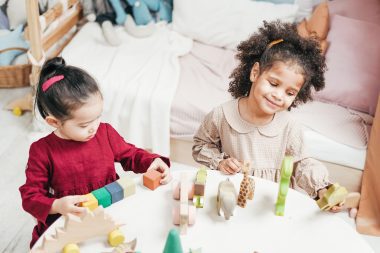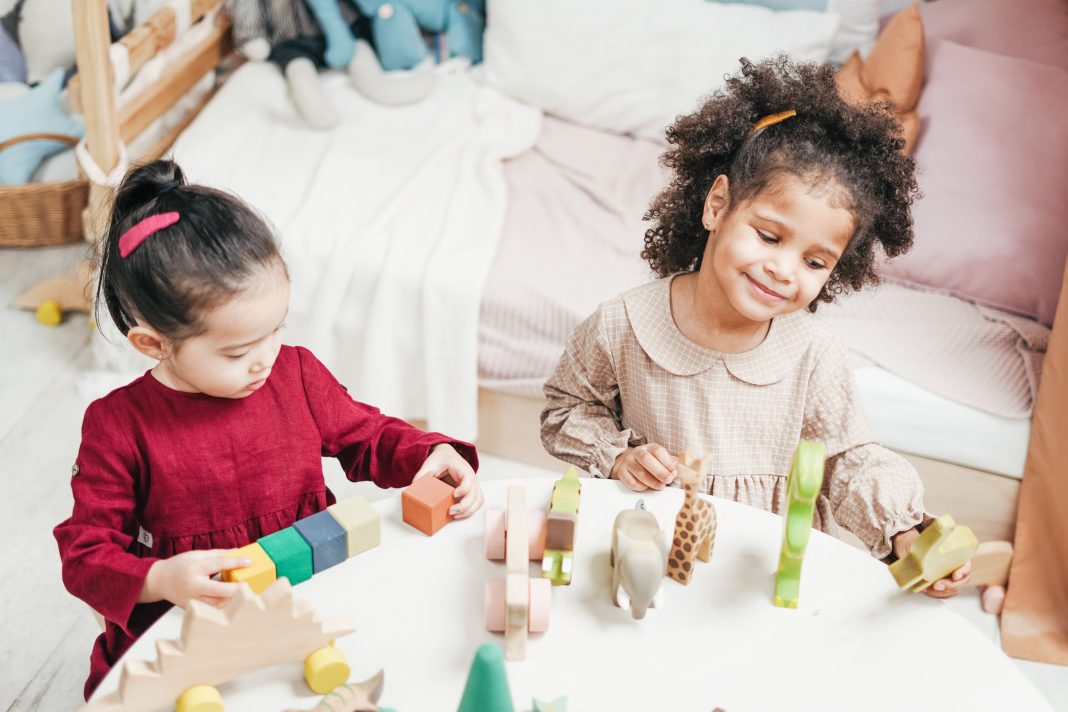Play is the source of endless joy, laughter and excitement for parents and their little ones alike. But it’s also a time where children explore the world around them and learn new skills, which is why playrooms are such a fun place to explore a child’s interests. Whether you want to encourage your child’s natural curiosity or encourage your child to spend time on their own, creating a playroom that encourages both exploration and craftwork, is a great way to do so. But creating a playroom that’s both safe and fun for everyone can be challenging. Here are some tips on how to do so.

Start at the Bottom by Picking Your Flooring
Choose flooring materials carefully to avoid any injuries and to keep your playroom safe. If you have young children, hardwood flooring is great, especially if you plan to use rugs to differentiate the areas of your playroom. You can opt for an environmentally-friendly option like reclaimed wood flooring if you want the room to look nice both now, and when you use that room for something else in the future! Just remember to cover the flooring with soft mats or rugs if the children are toddlers or younger to avoid excess bumps or bruises.
Use Soft Furnishings
Soft furnishings are an excellent choice for playrooms due to their safety and comfort. This is especially important when your child is young. Baby equipment, including walkers and toys, should always be made of soft materials that are comfortable for your child to use. Likewise, toys for older children, including trampolines and climbing equipment, should also be made of soft materials, as these can easily cause injuries when used improperly. Soft furnishings can make a playroom feel more like a home and help encourage creativity in your child. As your child ages, you can remove some of the softer items and upgrade to more appropriate furnishings.
Safety First
Always make sure to secure all dangerous items and equipment in the playroom. This might include walking toys and furniture, soft furnishings, or even toys that may be used to climb. If your child is too young to use these toys safely, do not let them play with them.
Safely securing dangerous items and equipment is essential for preventing injuries in the playroom. This can include tethering anything tall, like a changing table, to the wall before the kids go into the room to play for the first time. These heavy objects can tip if pulled on by a toddler learning to walk or needing a little help when they lose their balance.
You also need to make sure the room itself is babyproofed. This should include covering outlets, using baby gates, and keeping all cupboards closed and locked to keep little ones safe.
Get Organized
Organization is key in a playroom. You want to keep everything in its place so that it is easy to find what your child needs when they want to play. You can do this by labeling items and creating a system of folders and drawers with organization tools. Organized playrooms also make it easy for you to find what your child needs or wants during playtime.
Let Children Play with What They Love
Young children love repetition and may not be interested in new skills until they are older, so play with what your child loves! Pick toys that encourage creative play and let your child create with their imagination. This will help them learn new skills, as well as develop problem-solving skills that will help them in the future.
Create a fun space by adding fun textures, like sand or colorful pillows, to encourage sensory play. This will help your child learn to identify different textures, which is an important skill for later life. You can add to this experience with a wide array of colors as well.
Encourage problem-solving skills with puzzles, like jigsaw puzzles or building blocks, which help your child think ahead and solve problems. This is an important life skill that will help your child in school and beyond.
Use Your Child As the Motivation for Their Playroom
Creating a safe and fun playroom is a great way to encourage creativity in your child. This can be done by creating a space that encourages sensory play and problem-solving skills, while making it fun and comfortable for your child to explore these ideas. To create a playroom that’s both safe and fun, enjoy the tips we’ve provided. There are endless possibilities when it comes to a playroom, so don’t be afraid to bring your child’s imagination to life!





















